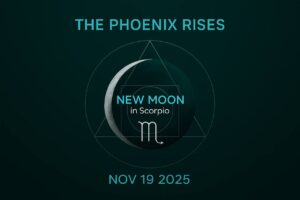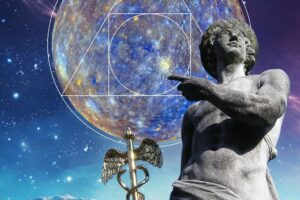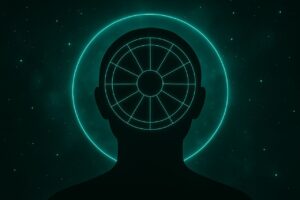In a world transformed by dating apps, shifting gender roles, and evolving expectations of partnership, the quest for meaningful love remains one of the most universal human pursuits. While technology offers new ways to connect, it also presents complexities that make love more elusive. Amidst this paradox, many are turning to astrology—an ancient system of celestial symbolism—for clarity in romance.
Can astrology truly help you find your perfect match or enhance your current relationship? The answer lies not in prediction, but in awareness. Astrology offers a symbolic mirror, helping us understand our emotional makeup, attraction patterns, communication styles, and relational dynamics. When approached with depth and sincerity, it becomes a profound tool for cultivating emotional intelligence, relational empathy, and enduring love.
The Foundations of Astrological Compatibility
Astrological compatibility, also known as synastry, is the art of comparing two natal charts to assess the energetic interplay between individuals. This comparison doesn’t merely identify who you’re “destined” to be with—it reveals the nature of the connection: its strengths, challenges, chemistry, and potential growth areas.
Key Elements in Compatibility:
- The Luminaries (Sun and Moon):
- The Sun represents core identity and life force. Comparing Sun signs helps determine ego compatibility and mutual vitality.
- The Moon governs emotional needs, instincts, and comfort zones. When Moons are in harmony, individuals feel emotionally safe and understood. Oppositions or squares between Moons may challenge emotional timing or needs, demanding conscious nurturing and effort.
- Venus and Mars:
- Venus reveals how we love, seek pleasure, and express affection.
- Mars governs desire, assertion, and sexual expression. A dynamic interplay between Venus and Mars across charts often signals magnetic chemistry or sexual tension. Venus conjunct Mars, for example, suggests fiery attraction, while Venus square Mars might indicate passion that teeters between love and conflict.
- Mercury:
- Mercury governs communication. Harmonious Mercury aspects support clear understanding; difficult ones may signal miscommunication or conflicting worldviews. Mercury square Mercury can create “talking past each other” moments, whereas a Mercury trine Moon can foster intuitive emotional understanding.
- Saturn and Outer Planets:
- Saturn aspects reflect commitment potential, life lessons, and karmic weight. Harmonious Saturn aspects often anchor relationships; challenging ones demand growth. Saturn square Venus might feel restrictive but also push a couple to define their values and priorities.
- Uranus, Neptune, and Pluto bring themes of liberation, soul-union, and transformation. These aspects add depth but may also stir profound change. Neptune-Venus aspects can inspire spiritual love or dissolve boundaries; Pluto-Moon contacts evoke emotional intensity or vulnerability.
- The Angles (Ascendant, Descendant, MC, IC):
- These axis points describe how individuals express themselves outwardly and interact in close partnerships. Connections to these points can indicate familiarity or fated encounters. A partner’s Sun on your Descendant, for instance, often signals recognition of a key relational archetype.
Understanding the Synastry Chart
Synastry is more than matching signs—it’s the energetic fusion of two charts. In a synastry chart, astrologers examine:
- Aspects between planets across both charts.
- Overlays, where one person’s planets fall in the other’s houses, revealing which life areas are activated.
- Balance between elements and modalities (Fire, Earth, Air, Water / Cardinal, Fixed, Mutable).
For example, if one person’s Mars falls in their partner’s 10th house, they may energize the partner’s ambition or public life. A Moon in the partner’s 4th house may evoke feelings of home, safety, or childhood nostalgia. Elemental balance matters too—too much Fire and Air might generate excitement but lack grounding. Too much Water and Earth may lead to depth but stagnation.
Composite Charts: The Soul of the Relationship
While synastry examines interactions between two people, the composite chart merges both charts into one—representing the relationship itself as a third entity. The composite chart reveals:
- The emotional climate (composite Moon).
- Shared values (Venus), goals (Sun), and communication style (Mercury).
- Relationship purpose (Midheaven) and core foundation (IC).
Astrologers use this chart to understand the relationship’s identity and trajectory. For instance, a composite Sun in the 10th house might suggest a couple with a public mission, while one in the 4th may indicate a focus on home and intimacy. A composite Neptune on the Ascendant might make the relationship feel ethereal or confusing; Pluto on the Descendant could bring intense relational transformations.
Composite aspects to outer planets often show how the relationship is experienced by others or serves a collective role. A couple with composite Uranus square the Sun may struggle with consistency but embody change or innovation together.
Astrology and the Journey of Self-Awareness
Perhaps the most powerful gift astrology offers is self-awareness. Before understanding compatibility with another, astrology helps you understand your emotional blueprint—what you need, fear, avoid, and crave.
- A Libra Venus seeks harmony, beauty, and companionship.
- A Capricorn Moon requires stability, structure, and measured emotional expression.
- A Scorpio Mars craves intensity, loyalty, and transformative passion.
By knowing your chart, you approach love not as a search for someone to “complete” you, but as a conscious collaboration between two whole individuals. You learn your attachment style, triggers, and love language in astrological terms.
Self-awareness also helps with relationship patterns. You may notice repeated synastry aspects in past relationships—perhaps you attract partners with Mars square your Venus. Astrology reveals these cycles and offers insight into why.
Using Astrology to Navigate Real-World Love
Astrology isn’t a substitute for communication, boundaries, or emotional maturity—but it complements them. Here’s how it can actively support love:
1. Enhancing Communication
Learning your partner’s Mercury sign can drastically improve communication. An Aries Mercury is direct and impulsive; a Pisces Mercury is intuitive and poetic. By speaking each other’s “language,” you reduce misunderstanding.
Also consider Mercury house placements and aspects. Mercury in the 12th house may communicate more through feeling or subtle cues, while Mercury opposite Uranus may enjoy debate but need space.
2. Timing Decisions
Electional astrology helps choose auspicious dates for proposals, weddings, or relationship talks. Transits also reveal ideal times for reflection (e.g., Venus retrograde) or commitment (e.g., Saturn sextile natal Venus).
Transits through the 7th house or over natal Venus/Moon often coincide with new relationship developments. A Jupiter return may signal romantic expansion; a Saturn square may bring clarity through hardship.
3. Healing Conflict
If your charts show Mars square Mars or Moon square Saturn, you may clash emotionally. Knowing this helps depersonalize conflict. You’re not broken—you’re growing through friction.
You can also look at composite Chiron—where the couple’s deepest wounds surface. This point can illuminate vulnerabilities and healing opportunities.
4. Deepening Intimacy
Astrology can help uncover emotional blind spots. For example, someone with a 12th house Moon may struggle to express feelings. Their partner, knowing this, can offer space and compassion rather than demand vulnerability.
A couple with composite Moon in Scorpio may crave emotional fusion but fear betrayal. Awareness of this dynamic supports safe intimacy.
What Astrology Can—and Cannot—Do in Love
Astrology can:
- Reveal the psychological and emotional dynamics between people.
- Identify mutual needs, attractions, and friction points.
- Support growth through conscious awareness.
Astrology cannot:
- Guarantee love or longevity.
- Replace communication, trust, and mutual effort.
- Dictate who you “should” be with.
Ultimately, astrology provides a map, not a mandate. You still choose the path.
Astrology in Long-Term Relationships
In long-term partnerships, transits and progressions shape the relationship’s evolution. For instance:
- Saturn transits may test commitment or redefine boundaries.
- Uranus transits can bring disruption or liberation.
- Progressed Moon cycles shift emotional focus every 2.5 years.
Tracking composite chart transits shows how the relationship is changing. Pluto over the composite Sun may transform shared identity. Neptune on the composite Moon may signal disillusionment—or unconditional love.
Astrology also supports relationship repair. Couples in conflict might discover a temporary Neptune square Mercury transit—leading to confusion or idealization. Understanding this brings patience and clarity.
Final Thought: Love as an Evolutionary Journey
Astrology reveals that love isn’t merely about finding the “right” person—it’s about growth. Some partners arrive to awaken wounds, others to anchor stability. Some challenge you to evolve; others offer sanctuary. Every chart interaction serves a purpose.
Astrological compatibility isn’t about perfection—it’s about potential. When both partners are self-aware and willing to grow, even “difficult” charts can birth profound love.
As we navigate modern love—with its paradoxes of abundance and alienation—astrology offers more than compatibility. It offers compassion. It teaches that beneath every tension lies a lesson. That attraction has meaning. That timing matters. And that love, like the stars, follows cycles—not straight lines.
Let astrology be your compass, not your cage. Use it to know yourself, honor your patterns, and love with wisdom.
Because the real magic isn’t in finding the perfect chart match. It’s in becoming the partner you seek—and recognizing love when it arrives.






